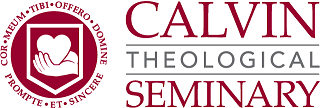Date of Award
1998
Document Type
Dissertation
Degree Name
Doctor of Philosophy (PhD)
First Reader
Henry Zwaanstra
Second Reader
Richard A. Muller
Third Reader
James D. Bratt
Abstract
The Presbyterian evangelist, William Edwin Boardman (1810-1886), has received limited attention in studies related to the American and British holiness movements. The attention he has received has been limited to his connection to other topics. The available analyses of his doctrine of sanctification does not clearly define the connection between his message and other nineteenth-century holiness theologies. Furthermore, these analyses of Boardman's message are generally based on a limited use of the primary sources. The purpose of this dissertation is to analyze Boardman's dextrine of sanctification in relation to the mid-nineteenth century American and British theological milieu. Attention will be given to the similarities and differences between his understanding of the doctrine of sanctification and that of the Wesleyans, the Oberlinians, the Reformed, and other proponents of the "higher Christian life," including adherents of the Keswick Convention. Boardman's message provided a middle ground on which the proponents of various holiness theologies could unite. He drew on these holiness theologies to formulate a doctrine of sanctification that held conflicting ideas in tension. He advanced a Trinitarian doctrine of sanctification in which he attempted to coordinate human inability and human responsibility with the work of the Holy Spirit. He affirmed both the Wesleyan doctrine of instantaneous sanctification and the Reformed doctrine of gradual sanctification. He also allowed for the possibility that Christians might enter the higher Christian life at the moment of justification, or as a result of a crisis experience subsequent to justification. Though he influenced the religious experience of many people, few joined him on this middle ground. The first chapter introduces Boardman, his theological milieu, and the secondary literature related to him. After this introduction, Boardman's life is considered in greater detail. In the third chapter, attention is directed to Boardman's message. The fourth chapter surveys the assessment of Boardman's writings in the religious press, and his response. The final chapter defines Boardman's place in the nineteenth-century holiness movement in view of the evidence.
Recommended Citation
Williams, Roy Leonard, "William Edwin Boardman (1810-1886): Evangelist of the Higher Christian Life" (1998). CTS PhD Doctoral Dissertations. 57.
https://digitalcommons.calvin.edu/cts_dissertations/57



